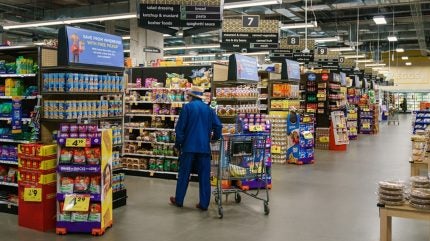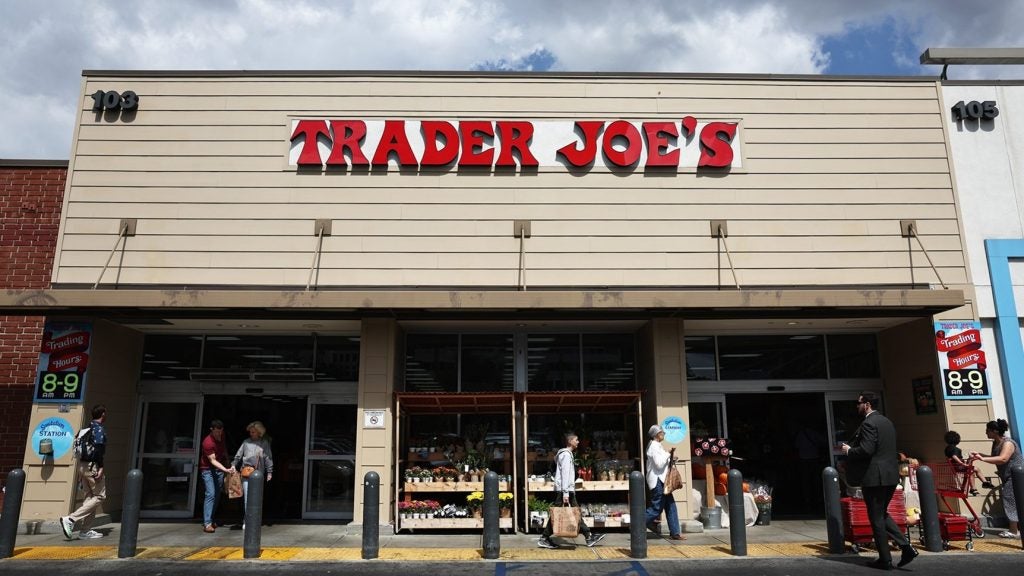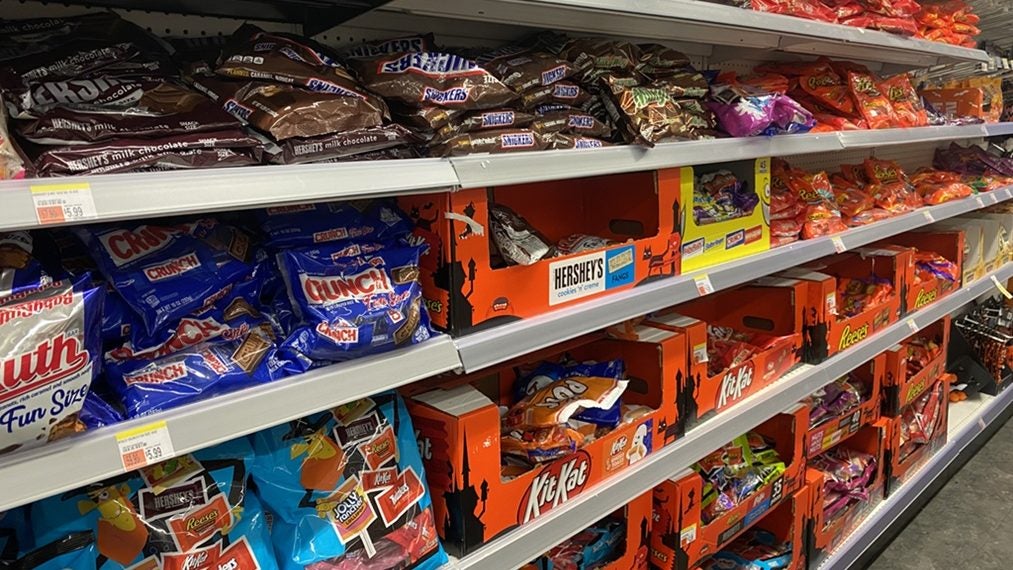
The relationship between grocers and CPG companies in the US has always been a delicate balance of power, negotiation and strategy.
Historically, these two entities have relied on each other – retailers needing branded products to fill their shelves and CPG companies needing access to consumers. However, the power dynamics between the two have fluctuated over the years, largely influenced by economic shifts, supply chain disruptions, brand strength, changes in consumer behaviour and advances in technology.
But today the balance of power in the US is tilted in favour of retailers, particularly large, nationally-focused chains like Walmart, Kroger and Costco, as well as fast-growing private-label retailers like Aldi and Trader Joe’s.
The shift has left many CPG brands operating in the US grappling with tighter margins, increased competition and shrinking influence in negotiations. Nevertheless, opportunities do exist for CPG companies to recalibrate these dynamics and regain some control over their distribution and brand influence.
But, first, let’s take a look at five of the key elements that have caused the balance of power to shift to favour retailers.
Retailer consolidation and scale advantage
Large grocery retailers have consolidated power through mergers and acquisitions, creating behemoth entities that wield significant influence over suppliers.

US Tariffs are shifting - will you react or anticipate?
Don’t let policy changes catch you off guard. Stay proactive with real-time data and expert analysis.
By GlobalDataWalmart, for example, accounts for a substantial portion of total US grocery sales, giving it immense leverage over pricing and product placement. Similarly, regional powerhouses like Kroger, Albertsons and many others further consolidate buying power, making it difficult for CPG brands to negotiate favourable terms. Just before Christmas, US courts blocked a planned merger between Kroger and Albertsons.
Private label expansion
Another major challenge for CPG companies doing business in the US is the rapid expansion of private label.
Retailers are investing heavily in their own store brands, which compete directly with national CPG products. Private label offers retailers higher margins, greater control over pricing and the ability to tailor products to their specific customer base.
Retailers own store shelf space and are strategically positioning their own brands at eye level on shelves, further diminishing CPG companies’ visibility and sales. Additionally, some of the fastest-growing grocery retailers in the US – Aldi and Trader Joe’s being the two most significant examples – primarily fill their shelves (about 85% of the total SKU-count in both chains) with their private labels.
Both of these chains have proven that retail success isn’t dependent on carrying the typical assortment of branded national CPG products, including the top brand in each category.

Data ownership and consumer insights:
In today’s digital era, data is king and grocery retailers have taken full advantage of their access to consumer purchasing behaviours. Companies like Amazon (which includes brick-and-mortar chains Whole Foods and Amazon Fresh in addition to its e-commerce sales), Walmart and Kroger have unparalleled insight into customer preferences, allowing them to optimise product placement and promotional strategies. US retailers use this data to dictate terms to CPG brands, demanding higher fees for prime shelf space or exclusive promotions. In contrast, CPG companies often struggle to gain direct access to consumer data, limiting their ability to build direct-to-consumer (DTC) relationships.
E-commerce and omnichannel retailing
Online grocery sales in the US have surged compared to a decade ago, with platforms like Instacart, Amazon and Walmart’s e-commerce services leading the way.
This shift has further strengthened retailers’ control, as they dictate which brands get featured on digital storefronts and how products are displayed in search results.
The rise of click-and-collect and home delivery services means retailers act as gatekeepers to consumers, making it harder for CPG companies to differentiate themselves.
Inflation and supply chain pressures:
The economic volatility the US has seen in recent years, particularly due to the Covid-19 pandemic and subsequent inflationary pressures, has added another layer of complexity.
Retailers have pushed back against the frequent requests for price increases from CPG companies, arguing consumers are unwilling to bear additional costs.
At the same time, supply chain disruptions have forced brands to make tough decisions regarding production, transportation and distribution, which are all areas where retailers hold significant leverage today.
All is not gloom and doom for CPG companies, though. While grocery retailers hold the upper hand, CPG companies are not powerless. By adopting new strategies, brands doing business in the US can improve their bargaining position and regain influence in the market.
Leverage brand strength and consumer loyalty
Strong branding and customer loyalty remain crucial weapons for CPG companies in the US. Brands with established reputations can leverage their direct connection with consumers to push back against retailer demands.
For instance, companies with highly loyal customer bases can use their market presence to negotiate better shelf placement or resist price suppression tactics. Over the last few years, most branded CPG companies have focused less on marketing and brand building and more on short-term strategies like sales promotion.
CPG companies need to focus more on brand marketing, which is primarily how loyal customer bases are built, in today’s new environment where the balance of power has tilted to retailers.
Instead of merely ceding data power to retailers, CPG companies can work to enhance collaboration through data sharing and joint marketing initiatives.
By demonstrating how their own consumer insights can drive traffic and sales, CPG brands can position themselves as valuable partners rather than mere suppliers.
Differentiation is key in a crowded marketplace. Instead of competing directly with private-label brands, CPG companies can focus on premium, organic or niche products that command higher price points and offer unique value propositions.
Limited edition products, health-conscious products and sustainable packaging initiatives are just a few areas where CPG brands can set themselves apart.
Explore alternative distribution channels
CPG brands in the US should diversify their sales channels to reduce dependency on large retailers.
For example, expansion into club stores, independent grocers, convenience stores, drug chains and developing direct-to-consumer models can provide additional revenue streams.
Many CPG companies are doing this successfully. More need to follow suit, as long as the particular brand and product fit the particular type of retail channel and store format.

Direct-to-consumer sales still represents a small percentage of CPG product sales in the US compared to sales at retail stores but it’s growing and is one of the most effective ways CPG brands can over time reduce reliance on retailers.
Most brands should have an e-commerce platform, allowing for sales directly to consumers. The strategy not only provides CPG brands with valuable consumer data but also potentially reduces their dependence on grocery retailers for distribution.
Consumer data can also be shared with retailers as part of developing a better partnership with them, which fits in nicely with the data sharing point noted above.
The primacy of consumers
Retailers and CPG companies only exist because of consumers. And consumers, who ultimately hold the power, are who retailers and CPG companies have in common. Both retailers and CPG companies need to remember this and tailor the relationship with the primacy of the consumer top-of-mind and at the center of all they do.
Over the last few years US consumer behaviour has changed. High food inflation – overall grocery prices in the US are up by about 25% since 2020 – has caused consumers to be more demanding. They want more value from retailers and CPG brands, and will do what it takes to get it, including switching to private-label brands, shopping at multiple grocery chains, choosing smaller package sizes, and even buying less per-each shopping trip.
Both grocery retailer loyalty and CPG brand loyalty are down among US consumers, according to EY. Recent research from EY shows national CPG brands aren’t important in 48% of consumer purchase decisions, which puts CPG companies at a clear disadvantage.
Historically, the relationship between grocery retailers and CPG companies has been fairly linear – retailers needing branded products to fill their shelves and CPG companies needing access to consumers. Those days are long gone. The balance of power today is in the hands of grocery retailers. However, CPG companies can rebalance the scales.



